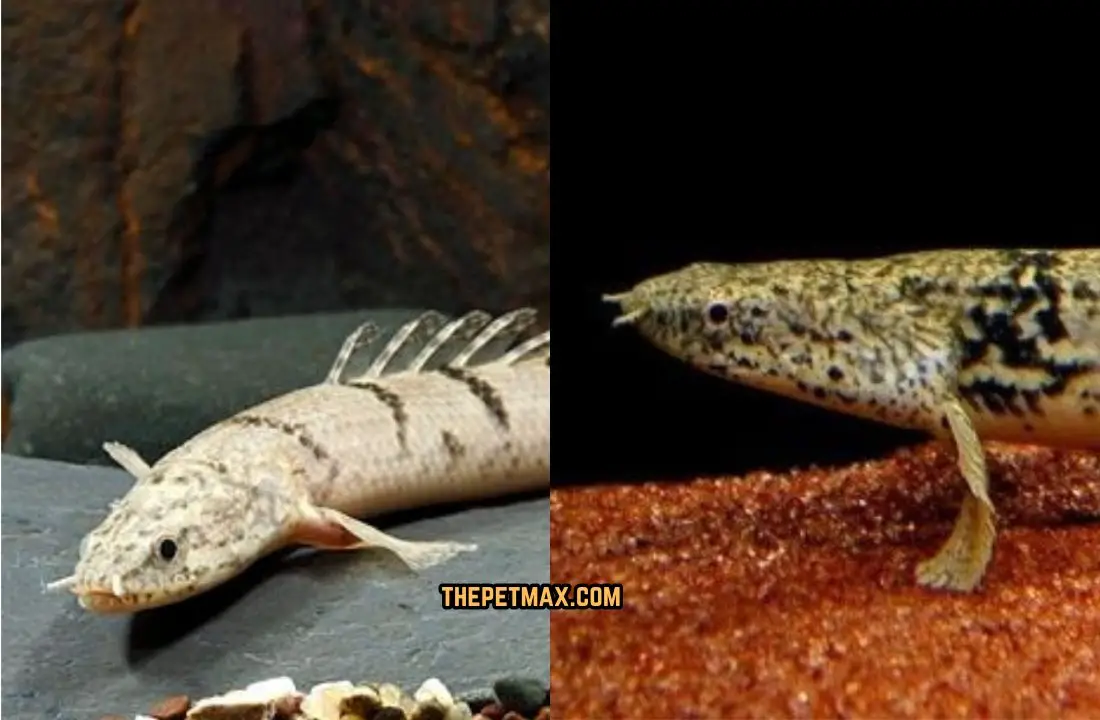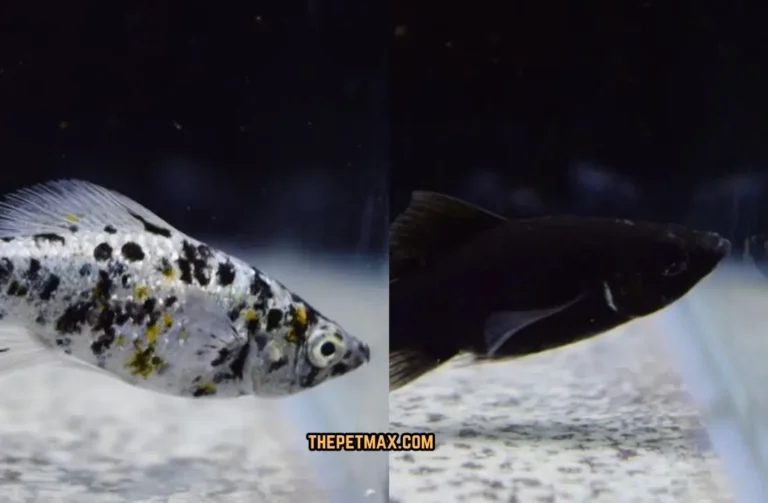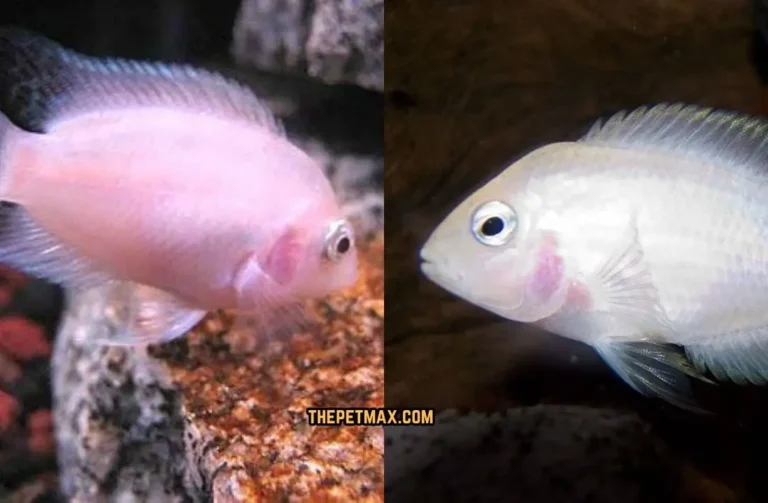Delhezi Bichir Fish Care Guide

A Delhezi bichir is a fascinating freshwater fish that you should keep in a big tank and with a water quality system along with food rich in meaty protein. They might be peace-loving, but they might also hunt small fish when they are in the mood.
Whether it is the palm leaves or the sandy substrate, they will feel more comfortable because this is a place where they belong. If they are handled correctly, the risk of dying after just 10-15 years is very small.
Contents
- 1 Natural History of Delhezi Bichir:
- 2 Appearance of Delhezi Bichir:
- 3 Temperament of Delhezi Bichir:
- 4 Feeding Requirements of Delhezi Bichir:
- 5 Tank Requirements of Delhezi Bichir :
- 6 Why Should You Get a Delhezi Bichir for Your Aquarium?
- 7 Delhezi Bichir Breeding:
- 8 Health Conditions of Delhezi Bichir:
- 9 FAQ’s:
- 10 Final Thoughts:
- 11 Related Posts:
Natural History of Delhezi Bichir:
The maintenance of a solid in-game representation of the native water depth and the happiness of Delhezi bichirs is the cornerstone of their survival. It is their natural habitat that these animals live in the rivers and swamps of Central Africa particularly in the Congo Basin.
These polypterus fish are part of a prehistoric group of fish whose 100 million year haft has been witnessed. The wealth of the Delhezi bichir’s adaptive capabilities, they can survive in different environments from stagnant waters with lower oxygen levels to fast-moving water.
The Delhezi bichirs in natural habitats are famously nocturnal, that is, they emerge for the hunt in the nightline. They bend them by the labyrinth organ, a peculiar lung-like structure, which allows them to take up atmospheric air. This ability is just one of how sharks can tolerate oxygen-deficient habitats. They are also unique-looking with standout tear-drop-shaped bodies that have hard scales and paired limb-like pectoral fins.
Aquaculture of Delhezi bichirs becomes more evident with their capability to sustain in challenging environments and they can even sustain some drought that occurs in a short time. They are cunning hunters thanks to their acute sense of smell and keen incisor teeth. They have the skill to discover and pounce on their prey. They do that in their homes by eating fish, small invertebrates, and sometimes, plant fare.
Appearance of Delhezi Bichir:
Delechiaser bichirs get their very fanciful look. These animals boast elongated, thin bodies covered in complex aluminoid scales. Their coloration can range from different versions, mostly consisting of brown, black and gray shades which place them into the surrounding nature.
The first striking feature of these unique creatures is their two pectoral fins, which you will notice as they resemble limbs and give them their signature appearance. In a nutshell, these retro-style mysterious creatures deserve a place in anybody’s aquarium.
| Height | 12-18 inches |
| Life span | 10-15 years |
| Temperament | Peaceful |
| Size | 12-18 inches |
| Origin | South East Asia, Thailand and Malaysia |
| Breeding | Low difficulty |
| Water Temperature | 75°-82°F |
| Tank size | 55 gallons |
| Color | Dark Brown, Black |
| Scientific Names | Polypterus Delhezi |
| Water Type Fish Price | Freshwater $20-$50 |
Temperament of Delhezi Bichir:
The Polypteridae family of fish known as gars or bichirs, such as species of Polypterus delhezi, display a striving for peace. They are well known for being quite composed, even able to share an aquarium peacefully with other peaceful fish as well. * Dangling Modifier: The word “well known” can be a dangling modifier because it does not explicitly modify the fish.
Consider rephrasing to make the meaning clearer, such as “They have a widespread reputation for being quite peaceful”. Nevertheless, they have the characteristics of predators and sometimes the smaller fellow tank mates which may fit into their mouths can suffer due to that.
Hence, it would be wiser to keep them species-wise, with fish that are of the same size or bigger ones. And as long as there are a lot of places they can hide and you’ve got enough water for them to play around, you’re all set.
Feeding Requirements of Delhezi Bichir:
When speakers of Delhezi bichir fish are treated with a carnivorous diet and they have a very active heart, they are rather large. They have a diet based on meaty feeders which can be bloodworms (live or frozen), brine shrimp, or small fish according to their availability. You may additionally provide them healthy soon-sinking pellets or pellets made specifically for predator fish (e.g. cichlids).
Only give them food which contains a variety of nutrients for a well-countered diet. Feed them once or twice a day (depending on the specific breed) but don’t overfeed them as it may lead to health problems for the fishy.
Tank Requirements of Delhezi Bichir :
Wetland-living Delhezi bichirs are not the most inactive and fully grown and can reach 12-14 inches which makes a big tank necessary. A very important variable in creating an aquarium is the choice of a suitable aquarium tank size.
In my opinion, 50 gallons would fit best for the fish to have plenty of room for swimming and exploring. The provision of abundant hiding spots such as caves, rocks or timber is a sign that they like to re-treat, hence an important element. Additionally, they select a sandy substrate rather than a rock surface to imitate the proper habitat.
Thus, keeping the water at a temperature of 75-82oF(24-28oC ) and successfully managing the water quality is required for their satisfaction. Not to mention, they are adept at escaping their tank, that’s why a cover is an utmost necessity as well.
Why Should You Get a Delhezi Bichir for Your Aquarium?
If you are a fish keeper enthusiast with a taste for the atypical, then adding a Delhezi bichir to your tank could make for a splendid display of diversity! They are fish with a lengthy, figured and scaled body.
In addition, their noses constitute their defining feature and the reason behind their famous names. Their fascinating behavior also makes them extremely funny to observe. By contrast with them (plants), they (cacti) are tough to some degree and can survive in water conditions with some changes.
Just ensure you have a bigger tank whose dimensions are at least 36 long by 15 inches deep, and provide them with many hiding places. Incorporating Delhezi bichir into your aquarium, positively of course, will give it a special feature.
Delhezi Bichir Breeding:
One can try reproducing Delhezia bichir fish and it can be intriguing. To have a good gamut, you have to make sure that the tank setup is suitable for the species. Separate out the breeding and give it a breeding tank with soft, acidic water used in the climate maintaining 78-82°F (25-28°C).
Include in the fish escape a pair of bichirs and make sure they have enough hiding places as well as vegetation for them. The female will lay eggs, and the male will emerge to fertilize them. Finally, you simply take the adults away so their mouths do not consume the food. It’s necessary to mention that bichir hybrids can be sticky, then the possible failure of creating bichirs must be highlighted.
Health Conditions of Delhezi Bichir:
There are different diseases that the Delhezi bichir fish usually have and water quality management in their aquarium is the main reason for its effects. They like water with slightly acidic to neutral pH (6.5 – 7.5) as well as temperature between 75-82 degrees Fahrenheit (celsius – 28 Installing a large tank with a good filtration system and doing regular water changes make it possible for the fish to stay healthy.
Apart from this, kindly keep in mind to provide them with diversified food preferences that include high-quality pellets alongside frozen foods and live foods for the provision of a balanced diet. Similarly, a regular check-up for any signs of disease should be part of their schedule. For example, these could include loss of appetite, strange behavior, or physical symptoms.
If you come across any ailments it is better to immediately disclose it to your experienced aquarium owner or a veterinarian who will prescribe a suitable treatment. Please take great care in breeding your Delhezi bichir fish.
FAQ’s:
How big does a Delhezi Bichir get?
The maximum size a delhezi bichir can reach is 12 inches, with a female bichir being around one inch longer.
Are Delhezi Bichirs compatible with other fish?
Moldavi bichirs can be very dangerous, that’s why they are not always a good choice for common aquariums. Normally, keep the betta with bigger, solid fish that could earn a living on their own. The only thing you must take note of is the tank’s size for the hedgehogs or their ability to hide in many places.
What should I feed my Delhezi Bichir?
Give your delhezi bichir food the same as you’d give to your carnivorous species: blood worms, brine shrimp and some small and minced fishes.
What water parameters should I maintain for Delhezi Bichir’s?
Delhezi bichirs occupy a very specific range of relatively narrow pH (6.5-7.5). The temperature, therefore, fluctuates between 75 and 82 degrees Fahrenheit. It is also essential to supply them with a filtered tank free of its residues and change of the water from time to time to keep up good water condition.
Final Thoughts:
The cool and unique bichir fish from Delhezi is no doubt. They require quality water, a certain length of the atmosphere, and a meat diet. Be sure to buy a tank that’s big enough they can grow into, or maybe more than one.





